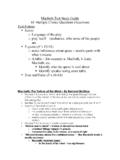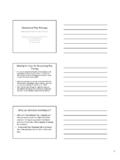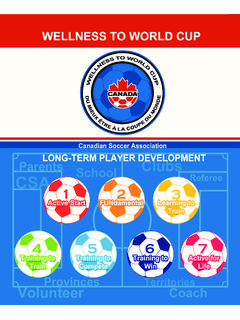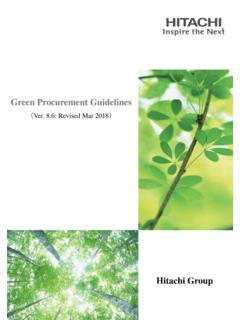Transcription of LOVETalkSINGReadPLAY - Families NSW
1 Families NSW Communication Strategy for Parents and Carers Project Northern SydneylSouth East Sydneyl South West SydneyThe early social, emotional and intellectualdevelopment of SINGReadPLAYPLAYLOVETalkReadSING AcknowledgementsLove, Talk, Sing, Read, Playis a product of the Families NSWC ommunication Strategy for Parents and Carers Projectundertaken as an initiative of the Northern Sydney, South EastSydney and South West Sydney regions. Sydney Children sHospital, Randwick is the auspice of the NSW (formerly Families First) is the NSWG overnment s prevention and early intervention strategyaimed at supporting Families in raising children. FamiliesNSW is based on a universal, population based approachto supporting Families with children 0 - 8 years and is theresponsibility of five partner agencies NSW Health and the Departments of Education and Training, Housing,Community Services and Ageing, Disability and Home Manager and Editor:Lynn GarlickPhotography:Lynn Garlick, Mervyn BishopDesign:Garry McArthurEditing:Fiona Crawford, Jacky HonyReviewers:Dr Roger Blackmore, Judy Croll, Patricia Aguayo,Ruby-Jo Hawkett, Amanda WheelerProject Management Committee:Professor Les White,Dr John Eastwood, Penny Church, Lynn Garlick, Ruby-JoHawkett, Jacky Hony, Leanne Chan, Tania Rimes Consultative Committee.
2 Representatives from governmentand non-government agencies were consulted in thedevelopment of the adapted with permission from the Northern Sydney FamiliesFirst Professional Development Project for Lifeproduced by UNICEF was chosen as the templatefor this resource due to its international thanks to the Families who allowed us to photograph their beautiful Love, Talk, Sing, Read, play ? Children s development5 The first three brain building years 9 Parent and carer handout 14 LoveHelping children be their best 23 Talk, Sing, ReadEarly literacy31 PlayPlay is important 37 ReferencesInside back coverPoster for servicesA gift for parents and carersParent and carer handouts The first three brain building yearsHelping children be their bestHelping parents and carers be their bestTalk, sing and readPlay is important1 ILOVE Talk SING Read PLAYI ntroductionPurpose Love, Talk, Sing, Read, Playprovides evidence-based information about the early social, emotionaland intellectual development of children.
3 It presentsthe latest research as accessible information forservice providers to pass on to parents and carers. AudiencewHealth, welfare, education and children s serviceproviders that have contact with those caring , cultural and religious leaders andemployers who can communicate this information and offer the support Families making use of media to inform makers whose decisions can impact uponchildren and to use Love, Talk, Sing, Read, play wRead the relevant sections and play the DVDand/or look at the websites and/or referenceslisted to gain more in-depth information aboutthe topics with your work colleagues how you canincorporate the messages into your the parent handouts within and at theback of the resource to have readily available togive to parents and translations of the parent handouts areavailable from the Multicultural HealthCommunication website; the poster for services at the back in thereception area of your service so that your clients can ask for the handouts available.
4 WYou could laminate the summary photographpages and place these around your can also be downloaded from the FamiliesNSW website. wIf your organisation has a newsletter it sends toparents and carers or the broader community,use information from the resource to write smallarticles about the social, emotional andintellectual development of children. wMake use of your organisation s website todisplay messages. wYour organisation could focus on promoting aparticular message for a number of months, such as the importance of play . wIn individual settings with clients you can showhow everyday activities with children areopportunities for enhancing communication what enhances development and whatcan damage it. Use the handouts to reinforceinformation given parents to anticipate developmental changesby talking about what is expected at the nextdevelopmental stage before it happens. This canincrease their confidence and help them to berealistic in their information to the parents.
5 Some parentswant information with detailed explanations butothers want short, direct messages. If parents orcarers express a desire to know more than thehandouts, the Supporting information sections inthis resource can be photocopied for additional resources available, such ashandouts, DVDs or lists of websites for parentswho want to find out parent and carer resourcesAs well as the parent handouts in this resource, anumber of parent resources have been developedby this project for distribution directly to parentsand carers at transition times. These parent andcarer resources are based on the same messages as this resource so that these messages arereinforced from many sources. These resources include: wParents Support Guidein the format of a z-cardwith local support information in each is given to new Families in the hospital soonafter the birth of their , Talk, Sing, Read, play , a stages ofdevelopment flip chart which has a fridge magnetattached.
6 This is given to parents and carers attheir first visit by a Child and Family addition, new parents will also receive aninteractive DVD produced by the Raising ChildrenNetwork. 2 ILOVE Talk SING Read PLAYO utlineThe sections in this resource have three parts:anintroduction; a summary of key messages andsupporting information. Why is this information important?This isthe introduction of the chapter and outlines theimportance of the issue. MessagesThese are summaries of the evidence inorder to be easily understood, communicated andacted upon. These messages can be communicatedby services to parents, carers and the community as informationelaborates on themessages, providing additional information. Itcan be used to answer caregivers questions. ReferencesThese can be found on the inside back cover. Translations of the developmental charts andother information for parents are available fordownloading from is also a poster for services to laminate anddisplay in their waiting areas to inform clients thatthey can ask for the parent and carer symbol appears at the end of each chapter and indicates websites where services can get further symbol indicates that a relevant presentation appears on the DVD found in the back pocket.
7 This would help readers looking for more detailed information. This symbol indicates the title of the parent and carer handouts that correspond with the relevant chapter and are found in the pocket at the back of the resource, as well as the development charts found within the resource. The handouts are based on the same messages presented throughout the resource. iiii3 ILOVE Talk SING Read PLAYLoveHelping children be their bestSecure, loving relationships with their parents andcarers provide children with the foundations for allfuture development, including benefit from parenting that is predictable and need to feel loved and feel good need to know they are safe in their homeand need limits that are reasonable in relationto their stage of and children learn from each , sing, readEarly literacyDeveloping language and literacy is an ongoing process that begins in the first years of life.
8 Talking, singing songs, telling stories and readingbooks to children helps them to learn tocommunicate, think and cope with feelings. It is never too early to talk, sing and read to is important play is vital to all aspects of children s is fun and it is a cherished part of learn by connections form between parents and children when they play together. Some children s play should be child-driven activities can be play and safe objectsfound in the home can be of messagesWhy love, talk, sing, read, play ?Children s developmentThe emotional, social and intellectual developmentof children is linked; each depends on andinfluences the caring for a child can promote theirsocial, emotional and intellectual developmentby showing them love and by talking, singing,reading and playing with them. These can be partof the everyday activities of caring for a is important to have realistic expectations ofwhat children are capable of at each stage and carers can offer opportunities andexperiences to children which can enhance theirdevelopment at each first three brain building years Children s experiences in the early years of life will influence their brain development.
9 The relationships parents and carers have withtheir children creates the foundation for theirchildren s learn best if they feel safe and lovedand have interesting things and places ILOVE Talk SING Read PLAYWhy? Why?LOVETalk SINGRead PLAYWhy? 5 ILOVE Talk SING Read PLAYC hildren s developmentWhy is this information important?Parents and carers have asked for information about child with parents of children aged 0-5 years across Australiafound that parents wanted a range of information about children s ageand developmental stages (physical, intellectual, emotional and social). Providing information about children s development can assist parentsto have realistic expectations of their children s abilities. Providinginformation on children s development can also help parents to besensitive and responsive to cues given by children. Being sensitiveto children s cues about their needs and responding appropriately iscritical for effective ILOVE Talk SING Read PLAYM essagesThe emotional, social and intellectual development of children islinked; each depends on and influences the caring for a child can promote their social, emotional andintellectual development by showing them love and by talking,singing, reading and playing with them.
10 These can become part of the everyday activities of caring for a is important to have realistic expectations of what children are capable of at each stage of and carers can offer opportunities and experiences tochildren which can enhance their development at each s development1234 Anyone caring for a child can promote their social,emotional and intellectualdevelopment by showing them love and by talking,singing, reading and playingwith them. These can beincorporated into the everyday activities ofcaring for a ILOVE Talk SING Read PLAYC hildren s developmentSupporting informationThe emotional, social andintellectual developmentof children is linked; eachdepends on and influences the most important way a child develops and learns isthrough interaction with others. The development ofpositive, caring and responsive relationships withcaregivers can enhance children s wellbeing fromfeeling secure and confident to explore the worldand other more parents and caregivers talk and respond totheir child, the quicker he or she learns.






